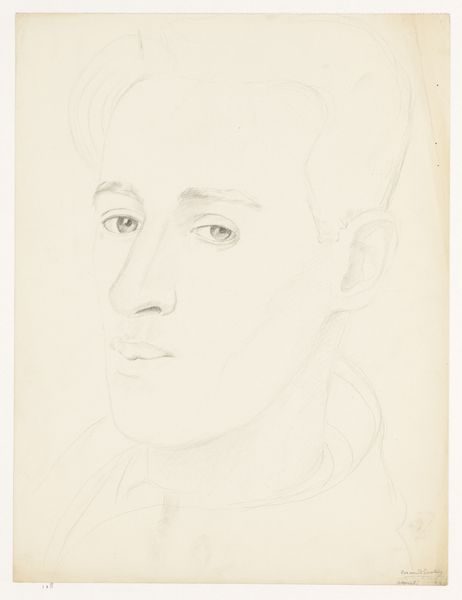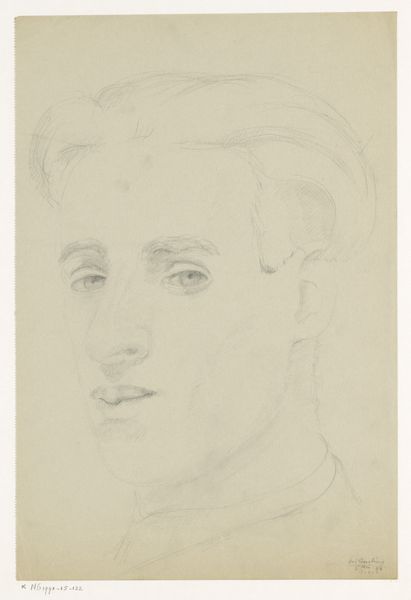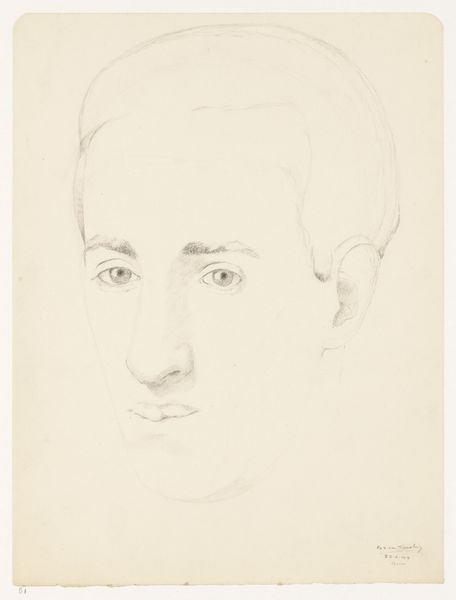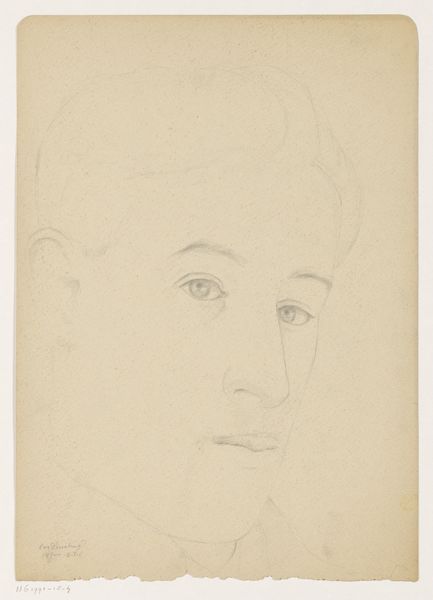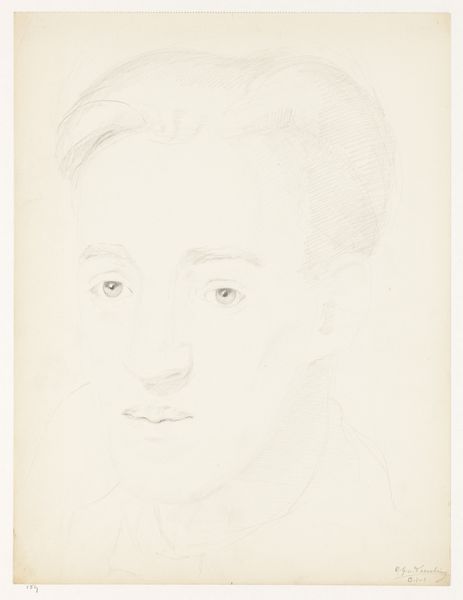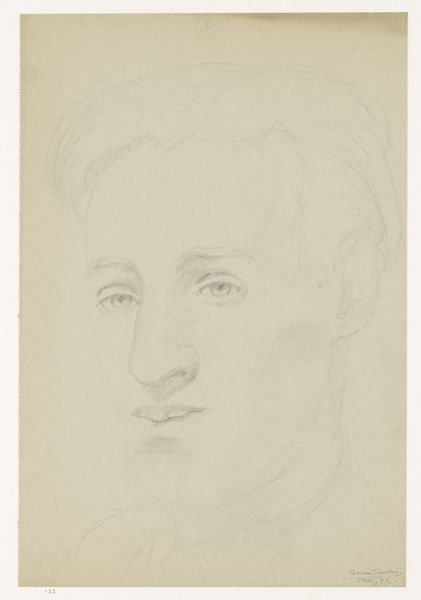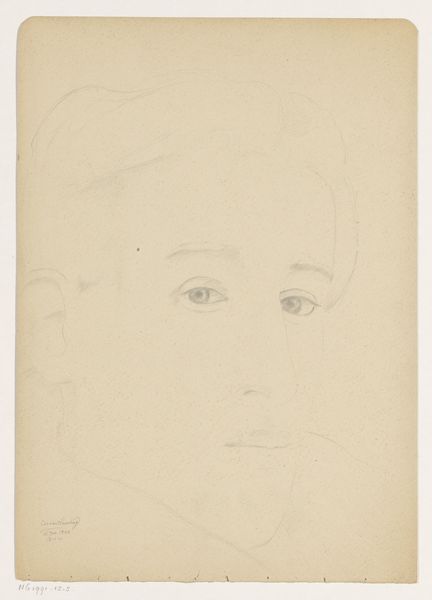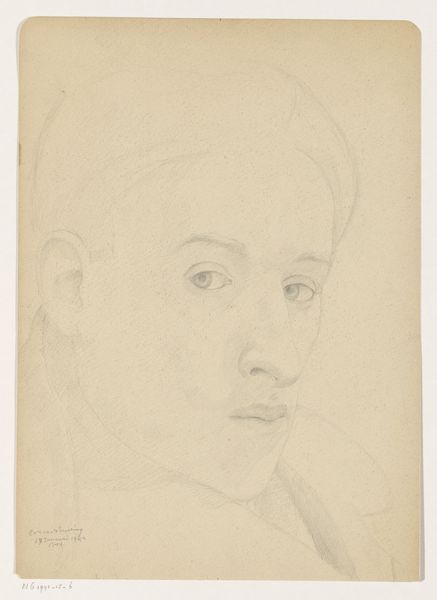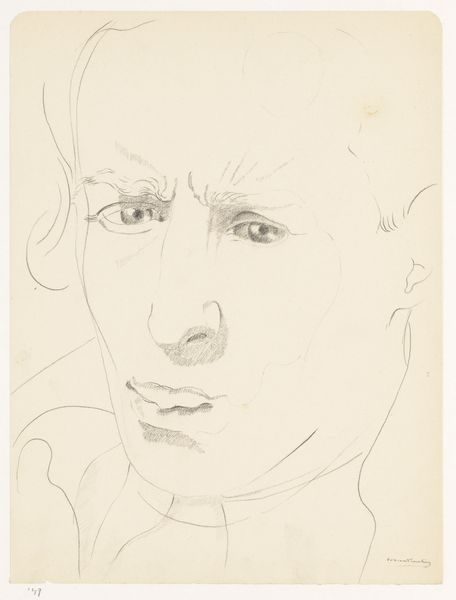
drawing, pencil
#
portrait
#
pencil drawn
#
drawing
#
self-portrait
#
pencil sketch
#
pencil
#
realism
Dimensions: height 35.5 cm, width 27.0 cm
Copyright: Rijks Museum: Open Domain
Editor: This is Cor van Teeseling’s self-portrait, B-1-1, made between 1942 and 1946, using pencil on paper. It's incredibly delicate. The lines are so faint. What strikes me is how ephemeral it feels, almost like a ghost. What do you see in this piece? Curator: I’m immediately drawn to the materiality itself, the starkness of the pencil against the paper. Consider the socio-economic context: wartime Netherlands. Materials were scarce, resources were diverted. What does it mean to create a "self-portrait" with such limited means? It speaks volumes about the artist’s persistence and ingenuity, wouldn’t you say? Editor: Definitely! It feels like he’s using what's available, almost like he's making art in secret or without the expectation that it would be displayed so prominently. The pencil strokes suggest both a simplicity and a focus. Curator: Precisely! And think about the labour involved. The artist’s hand, pressing the pencil, creating subtle variations in tone despite the scarcity. What sort of person persists with creating something during a time of limited possibility and likely great material stress? Doesn’t that change the nature of self-expression into a kind of act of cultural and personal preservation? Editor: I hadn’t considered that perspective. So, the apparent "unfinished" quality isn’t necessarily a lack of skill, but a statement in itself about available means, labor, and value. Curator: Exactly! The social context dictates the artistic outcome in compelling ways. The act of making, the material constraints, and the environment all intertwine to give the work a new kind of impact. Editor: I see this drawing with entirely new eyes now! Curator: Me too, our chat emphasized the profound connection between artistic creation and the circumstances from which it springs!
Comments
No comments
Be the first to comment and join the conversation on the ultimate creative platform.
